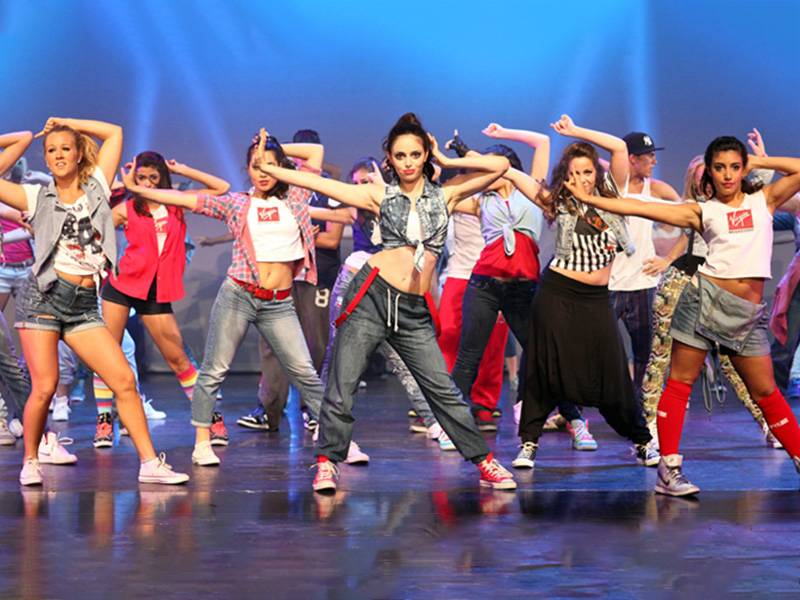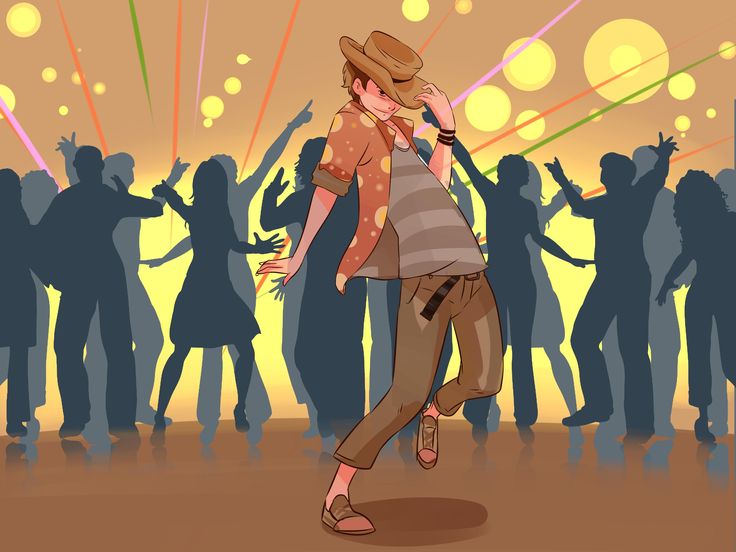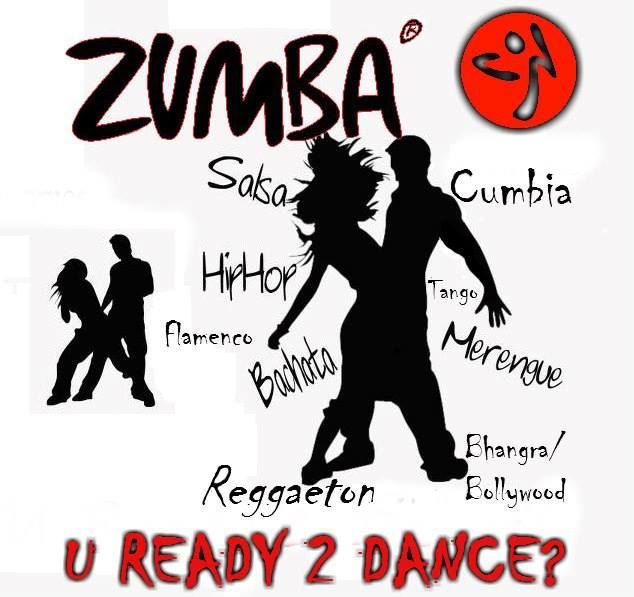How to make a dance shawl
Making a Dance Shawl - Native American
The Dance Shawl is an integral piece of regalia for all female dancers. Women’s Traditional is the oldest style of women’s dance. Also called Straight or Buckskin, it includes leather, wool, and cotton dresses, such as the Cherokee Tear Dress. In this dance, the shawl is draped over the arm, with the fringe swaying gracefully. The Fancy Shawl dance is a more recent dance style, originating within the Northern Tribes, along the borders of Canada and the United States. It is often referred to as Northern Shawl. In this physically demanding dance, the shawl is worn over the shoulders, with arms extended. The shawl is like the wings of a bird, with the decorative fringe, its feathers.
When not in full regalia, it is proper to wear a shawl while dancing. Most arena directors will require this, but there are social dances in which shawls are not needed. For many gatherings, not having full regalia is not an issue. With a dance shawl, you will be welcomed to join intertribal dances at many events, and they are simple to make.
Starting with cloth selection, a gabardine or other polyester, reversible fabric is a good choice. It doesn’t fray easily and has a smooth sway and bounce. It’s also washable and not too heavy or hot. To determine the length (yardage) needed, measure from the base of your fingers on one hand, across the shoulders to the same spot on your other hand. Add at least 2 inches for hem. When placed over your shoulders, the finished shawl should be comfortably grasped with your hands at your waist and elbows bent slightly. Too short will not work, but longer shawls can be draped over the wrists. If in doubt, add a few inches. The fabric should be wide enough to extend from your neck down to the top of your legs. A 45 inch wide fabric will work, doubled for a young girl, or cut down for a ladies shawl. A 60 inch wide fabric is most commonly used for women, and is worn folded in half.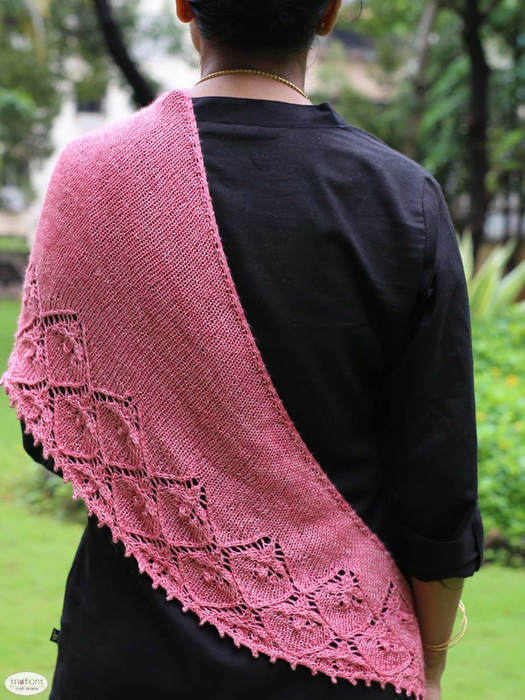
Before cutting and sewing, consider how the shawl will be worn. Many ladies start their regalia with a shawl and wear it over the shoulders until their outfit is complete. Then it is worn over the arm when in full regalia. Also consider the weight of the fabric. Using a 60 inch wide fabric that’s folded, may be too heavy and hot. Shawls can also be lined to cover stitches of appliqués and ribbon work on the front, or to provide additional warmth.
For an un-lined shawl, fold the edges twice for a hem less than an inch wide. Corners can be rounded or folded for a sharp angle. The hem can be hand or machine sewn. Now the shawl is ready to adorn with ribbon, appliqués, embroidery, beads, sequins, or fabric paint. It can be as simple as a one ribbon trim, or as elaborate as a quilted Sioux star, or a hand-painted masterpiece. In planning your decorations, keep in mind how they will look with the shawl on your shoulders, or folded across your arm. The colorfastness and durability of adornments should also be considered. Prewash each fabric attachment in salt water to set dyes and prevent staining. Leave at least one inch of the outer edges free for the fringe.
Prewash each fabric attachment in salt water to set dyes and prevent staining. Leave at least one inch of the outer edges free for the fringe.
Fringe displays the gracefulness in your dance steps and gives life to your shawl. It should be long and full for maximum sway and bounce, but should not touch the ground. Spool chainette is considered traditional, and spacing is important. If it’s too far apart, your shawl will look “bald,” and if it’s too close, you’ll be adding a pound or two. The additional weight and closely placed holes may tear the fabric. Depending upon the type of fringe used, spacing of ¼ to ¾ inches is standard. Experiment with a fabric scrap to determine what is pleasing to you. The space can be approximated or precisely marked with a sewing pencil, or other disappearing ink product. The marks should be even and above the hem.
There are several methods of attaching fringe. The needle method works best with lighter fabrics and single or double strand fringe. Thread the fringe and push through the fabric. Even up the ends and then knot the fringe close to the fabric edge. When knotting, be careful not to bunch up the hem, so the portion of fringe above the knot is flat with the fabric. A quality fringing needle is recommended, as others dull quickly.
Thread the fringe and push through the fabric. Even up the ends and then knot the fringe close to the fabric edge. When knotting, be careful not to bunch up the hem, so the portion of fringe above the knot is flat with the fabric. A quality fringing needle is recommended, as others dull quickly.
The awl and hook method uses a sharp awl to punch holes, and a small pointed crochet hook to pull the fringe through. This method is quicker. Sections can be marked, punched, and then fringed. Some fabrics will close up after the hole is punched. Depending upon fabric, a small slit can be cut with a thin blade knife. A wooden cutting board under the fabric is most helpful.
Although unconventional, I have used the precision leather punch available at Crazy Crow. It has 5 hole sizes, and was much easier on my hands. However, with a conical head, the holes do close up. Attaching a pre-fab fringe would be quicker and easier than these methods, but it is expensive, and considered a short-cut in poor taste.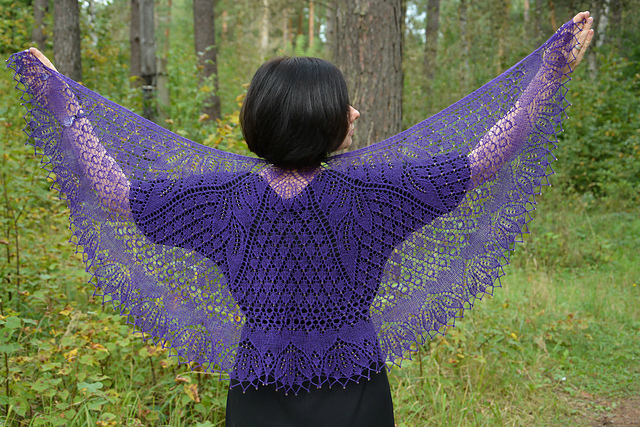 Thin satin ribbon is an accepted fringe option. Strips can be cut and sewn next to each other for full coverage. They can also be pulled through the fabric and knotted. For a lively fancy shawl dancer, satin ribbon is a lighter and sturdier fringe.
Thin satin ribbon is an accepted fringe option. Strips can be cut and sewn next to each other for full coverage. They can also be pulled through the fabric and knotted. For a lively fancy shawl dancer, satin ribbon is a lighter and sturdier fringe.
With chainette or satin ribbon fringe, fraying is an issue to be addressed. Some use clear fingernail polish on each strand, but this needs to be reapplied after washing. There are products which permanently seal the ends from pulling and fraying. Experimentation with scraps is advised. I would not recommend knotting the ends. This inhibits the important sway of the fringe. Fringed shawls should always be hand washed and air dried.
The dance shawl is a piece of regalia to be creative with. Use your imagination and let your personality show through your designs and adornment. But most importantly, be proud of your creation and enjoy it while dancing to the Drum.
Content copyright © 2022 by Jane Winkler. All rights reserved.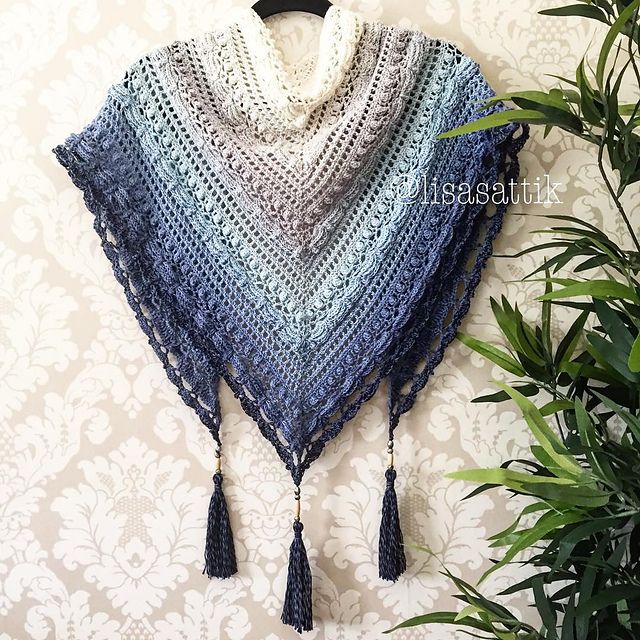
This content was written by Jane Winkler. If you wish to use this content in any manner, you need written permission. Contact
Jacqueline Olivia Pina
for details.
How to Make a Fancy Dance Shawl
SUE MCCARTY
29 SEP 2017
CLASS
... dmbaker/iStock/Getty Images
Since the 1950s, Native American "fancy dancers" have donned formal regalia, including heavily decorated shawls, to perform and compete at ceremonial inter-tribal powwows. During the Fancy Shawl Dance, female dancers perform intricate, choreographed steps, using the shawls to represent fluttering butterfly wings. Most shawls are personal creations, hand-crafted with elaborate embroidery, appliques or painted designs. Lightweight fabric is used, for both comfort and freedom of movement. The fringe, made of colorful ribbons or chainette fringe, is considered the most important component of a shawl because it flies in tune with a dancer's movements.
Measure the width of your shawl by having your model stand with arms outstretched. Measure from fingertip to fingertip using a tape measure. Add 2 inches to the total width to allow for seams. Cut a rectangle using that measurement as the width and 32 inches as the depth. Cut a second rectangle of the same size from a contrasting-color fabric.
Measure from fingertip to fingertip using a tape measure. Add 2 inches to the total width to allow for seams. Cut a rectangle using that measurement as the width and 32 inches as the depth. Cut a second rectangle of the same size from a contrasting-color fabric.
Pin the rectangles together, right sides facing in. Sew around all four sides, 1/4 inch in from the edge. Leave a 6-inch opening in the center of one side, back-stitching on both sides of the gap to lock the stitches. Turn the fabric right side out by pulling it through the gap, then press the seams flat.
Cut the 1/8-inch double-sided satin ribbon into 12-inch lengths.
Fasten one end of every ribbon using a glue stick 1/2 inch in from the edge of the shawl. Glue the ribbons about 1/2 inch apart along three sides of the shawl. Leave one long side free of ribbons. This will be the neck area of the shawl.
Pin the 3/4-inch satin ribbon face up around edge of the entire shawl, covering the glued ribbon ends and lining up with the outer edges of the shawl.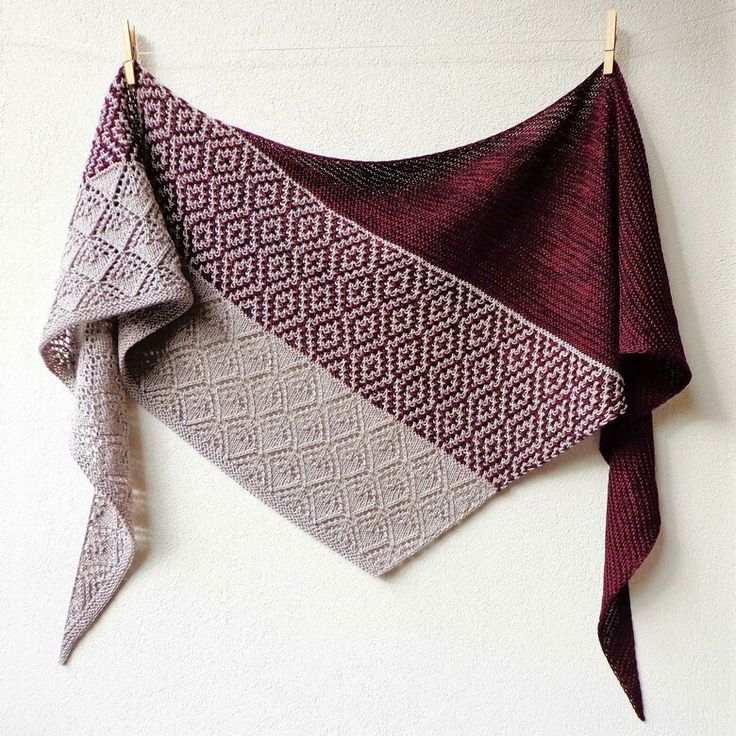
Pin starting at one corner while leaving a 1/4-inch end of ribbon at the end. Miter each corner -- which means to create a beveled edge -- by extending the ribbon about 1/4 inch past the edge; then make a 45-degree diagonal fold in the ribbon at the fabric corner. Pin each miter at the fold.
Join the loose ribbon at the last corner by pinching the inner sides together at the fabric corner, then finger-pressing them flat. Stitch the ribbon together along the fold and trim the ends to 1/4 inch after checking the fold and angle.
Stitch the ribbon to the fabric along both edges of the ribbon. Trim all loose thread ends.
Touch the very end of each fringe ribbon sparingly with an applicator brush of clear nail polish or nail hardener to prevent unraveling. Allow the polish or hardener to dry for about 10 minutes.
About the Author
Sue McCarty, a writer and copy editor since 1994, penned a newspaper humor column for several years.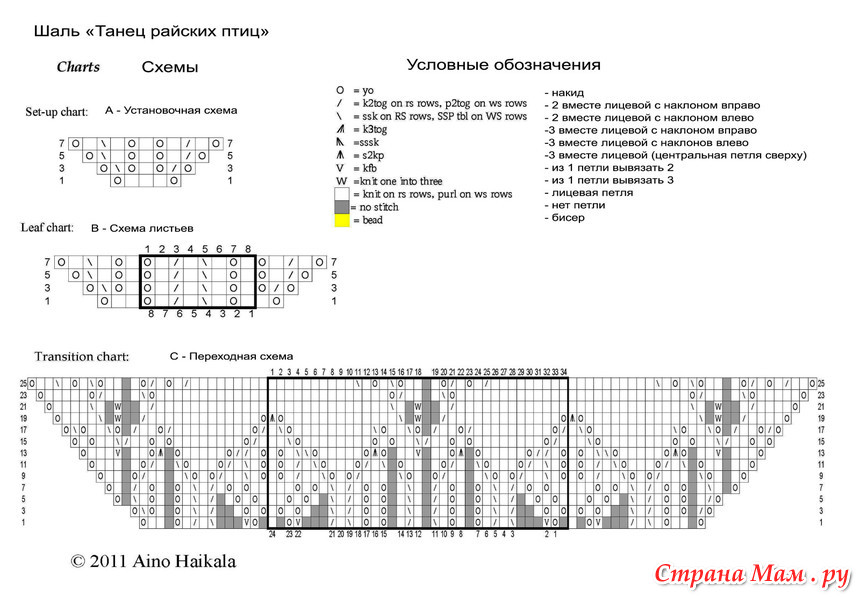 She assisted in her husband's motorcycle shop for 20 years and was also a professional gardener and caterer. While earning her Bachelor of Arts in communications, McCarty began her journalism career at a Pennsylvania daily newspaper.
She assisted in her husband's motorcycle shop for 20 years and was also a professional gardener and caterer. While earning her Bachelor of Arts in communications, McCarty began her journalism career at a Pennsylvania daily newspaper.
Related Articles
sewing and crafts
sewing and craftsThe most practical clothing for constant training is a skirt and blouse (dress is best left for performances). Like everything else, you can buy a skirt and a blouse, or you can make (or, at least, decorate) yourself, as well as dance accessories (shawls, fans) and jewelry.
If you are inclined towards needlework, then below you will find some practical advice on the following issues:
How to sew a flamenco dance skirt
- General recommendations
- Skirt with ruffles
- Flared yoke skirt
- Six-piece skirt
How to make an elegant flamenco blouse from an ordinary tank top
- General recommendations
- Cap sleeves
- Flashlight sleeves
- Ruffled sleeves
Dance dresses
- General recommendations
- Several sketches nine0010
Accessories and decorations
- How to make a simple fabric rose
- How to make a dancing fan
Flamenco dance skirt must be :
- wide,
- long,
- The cut of the skirt should emphasize the line of the hips.

Note that for beginners, a skirt that is not too long (to the middle of the calf) will be more convenient, you will need everything longer and more complex later. Skirt cut options can be different. We offer here three basic options, on the basis of which you can model a wide variety of styles:
- frilled skirt,
- yoke flared skirt,
- six-piece skirt.
General remarks to the silhouette of the skirt: The hip line can be drawn at different heights (maximum it can be lowered to the level of the palm above the knee, so we get a skirt with a train). It should be noted that the presence of a train means more complex work with a skirt in a dance. This option can be recommended not for beginners, but for staging "noble Sevillana". The skirt can be trimmed with ruffles or frills along the bottom edge or from the hip line to the bottom. nine0003
The easiest way to sew is a ruffled skirt :
This skirt is made from strips of fabric 15-20 cm wide on a wide belt or yoke (about 20 cm wide). The belt or yoke can be cut from the same fabric as the skirt itself or from knitted material (stretch). Basic principle: the length of the first strip of fabric after the belt or yoke (1 frill) is taken equal to one and a half to two waist circumferences:
The belt or yoke can be cut from the same fabric as the skirt itself or from knitted material (stretch). Basic principle: the length of the first strip of fabric after the belt or yoke (1 frill) is taken equal to one and a half to two waist circumferences:
waist circumference (OT) x 1.5 (2). nine0003
Each next frill is cut in the same way:
the length of the previous frill x 1.5 (2).
The number of frills can be different (4 or more), they can be cut from fabric cuts of different colors, patterns and even textures (for example: lace).
This skirt can be additionally decorated with braid or lace, which can also be sewn into the seam between the frills. A variant with multilayer frills is possible.
nine0002 Tip: it is better to take the length of the first two (from the waist) frills equal to 1.5 the length of the previous frill (belt), and cut the next (3.4, etc.) with a factor of 2. This ensures a better fit of the skirt to the hips. Approximate fabric consumption: 2-2.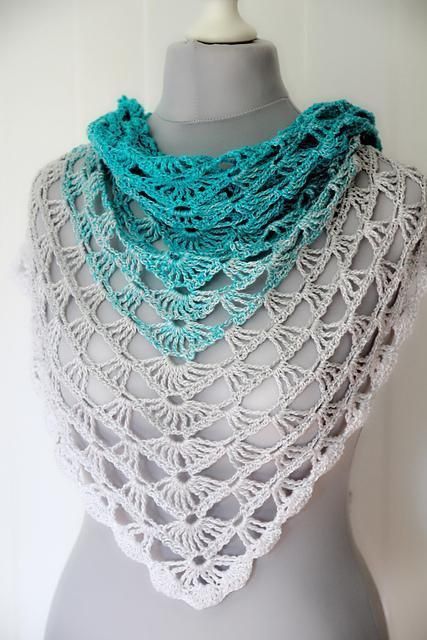 5 meters (with a width of 1.5 m, without additional elements)
5 meters (with a width of 1.5 m, without additional elements)
An example of a skirt assembled from frills ("sun"), sewn by Lyubov Sologubova according to a sketch by Vika Kharitonova.
[PDF pattern]
Flared skirt with yoke:
Flared skirt can be of different widths - from "semi-sun" to double "sun". Such a skirt is marked (previously called: is marked ) directly on the fabric. When cutting from a narrow web, the wedges are attached in the direction of the thread.
A semi-flared and 3/4 flared skirt is made with one seam in front (or two seams - it depends on the width of the fabric) and is a semicircle cut out of the fabric. In order for the flare in the "semi-sun" skirt with one seam to be evenly spaced, it is necessary to reduce the recess by 3 cm along the oblique line, and increase it by 2 cm along the fold (along the transverse thread), connect the points that determine the depth of the recess, i.e. draw the line of the hips of the skirt.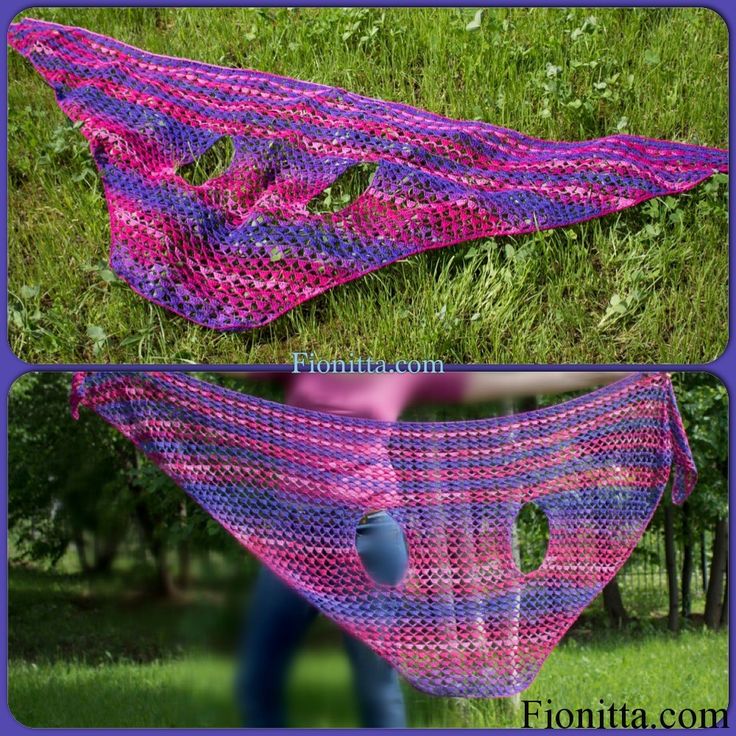 The line of the hips is drawn in the drawing as a semicircle equal to:
The line of the hips is drawn in the drawing as a semicircle equal to:
OB (thigh circumference) x 2.
Unlike a regular flared skirt, when modeling a skirt with a yoke, not the waist circumference is used for calculation, but the hip circumference. Along the line of the hips along the lobar and transverse threads, the skirt fits slightly.
Flared skirt "half sun".
Flared skirt "sun".
The yoke is cut out based on the circumference of the waist and the circumference of the hips. The height of the yoke depends on the height of the hip line. It can be made of knitted material, as well as decorated. nine0003
Tip: The front or side seams can be left unsewn, leaving a slit.
[PDF pattern]
Six-piece skirt.
A more elaborate skirt which is a flared skirt made up of six separate pieces (wedges). The pattern drawing is based on the drawing of a straight two-seam skirt.
General notes on the silhouette: The skirt can be flared at different heights: the maximum “flared line” (at the O points) can be lowered to the level of the palm above the knee. The width of the wedges can also be different. Based on this pattern, a skirt with a train can also be modeled. nine0003
The width of the wedges can also be different. Based on this pattern, a skirt with a train can also be modeled. nine0003
The width of the mesh (T-T1) is equal to the half circumference of the hips. The side seam is located in the middle of the mesh. The depth of the side tuck is calculated by the formula:
(POB - POT) / 2,
where FOB is the semicircle of the hips, POT is the semicircle of the waist. The back and front tucks are located 1/6 of the width of the mesh (i.e. half-girth of the hips) from points T and T1. The depth of the front and back darts is calculated by the formula:
(POB - POT) / 4,
where FOB is the semicircle of the hips, POT is the semicircle of the waist. The “flared” line, i.e., points O, O1, O2, is determined depending on the desired shape of the skirt. nine0003
Tip: If you have a straight long skirt, you can alter it by inserting additional wedges.
[PDF pattern]
First, the blouse should be a tight-fitting silhouette, with a round or V-shaped neckline. You can decollete the blouse both on the chest and on the back. The depth of the neckline depends on your courage or reasonableness.
You can decollete the blouse both on the chest and on the back. The depth of the neckline depends on your courage or reasonableness.
Secondly, sleeves (if any) should allow full freedom of movement and not hide the wrists and hands. This is due to the variety of beautiful movements of the hands in general and the wrists and fingers, in particular. nine0003
So, sleeve options:
- sleeveless at all
- "wings", single or multilayer,
- "lanterns" with ruffles or with tight 3/4 sleeves,
- fully fitted sleeve (stretch) with or without frills, depending on the finish of the skirt,
- tight-fitting sleeve, flared at the bottom, but not too long so as not to hide the tassel.
All of the above applies to dresses.
In what follows, we will assume that we bought the fitted knitted blouse from a shop. It can also be made by hand, but we will not consider this issue here. Is it possible to decorate it so that an elegant blouse turns out from an ordinary training top, when you look at it, Spanish dances immediately come to mind? We think it's possible if we get creative with the sleeves and work a little.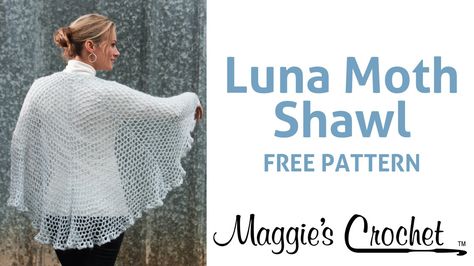 nine0003
nine0003
Cap sleeves
According to the pattern (left figure) of the short sleeve, we draw 8-10 vertical lines, parallel to the line of the elbow fold, at an equal distance from each other. Along these lines, the pattern is cut from the bottom of the sleeve to the collar (not completely) and moved apart by an equal amount.
Part of the lower half of the sleeve does not move apart so that there are no extra tails at hand. Such a sleeve can be left free at the bottom, assembled for assembly, or an elastic band can be inserted into it. Experiment with fabric combinations of different colors and textures, as well as trimming the edge of the sleeve and neckline. nine0003
Lantern sleeves
On the pattern of a short sleeve, three vertical dotted lines are applied at the same distance from each other: along the line of the elbow fold, through the shoulder notch and to the right along the collar.
The bottom of the sleeve is made with an elastic band and decorated with lace or frills. A 3/4 sleeve can also be sewn to the "flashlight" sleeve, the bottom of which is additionally decorated.
A 3/4 sleeve can also be sewn to the "flashlight" sleeve, the bottom of which is additionally decorated.
Tip: you can make a "flashlight" sleeve, which has a denser gathering on the bottom than on the collar. To obtain such a sleeve, additional lines are applied to the already expanded pattern of the main sleeve, along which the pattern is again cut and moved apart. nine0003
Tight sleeve with ruffles
Training top with long tight sleeves can be additionally decorated with single or multi-layered frills, the color and shape of which can be tied to the skirt trim. This is the easiest way to make an elegant dance blouse out of an ordinary sweater.
[sewing patterns and tips in PDF format]
Flamenco dance dress can be made on the basis of quite a variety of patterns. For example, as the basis for the bottom of the dress, you can use a pattern of a six-line skirt, to which the top is modeled. Only one thing is essential - the dress in its cut should not hamper you in the dance.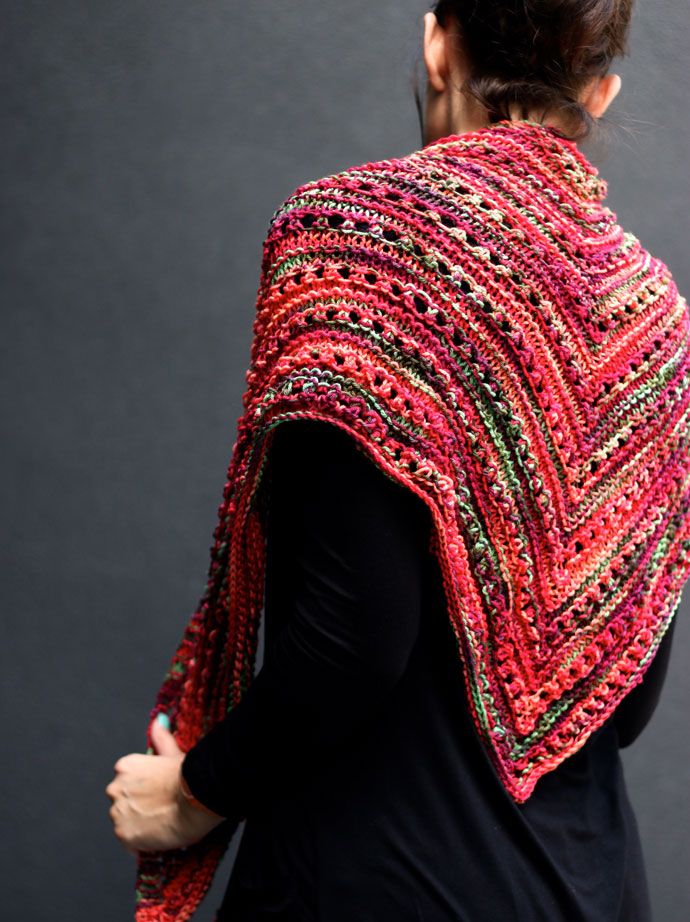 nine0003
nine0003
Among the traditional Spanish women's clothing, you can find models with a narrow upper part of the skirt (from the waist to the knee), which seriously restrict the movement of the legs. There are special types of dance that are based precisely on this restriction - in them a wide train, tailored from the knee to the bottom, is of great importance, but we will not dwell on this issue in detail now. For those who are just starting to dance, maximum freedom of movement and a cut that emphasizes these movements is necessary. A set of jackets and skirts or a dress should be comfortable and elegant. nine0003
By the way, about smartness. The popular notion that the "Spanish" dress is a combination of black and red is deeply wrong. Black and red are expressive colors that we also use, but it should not be assumed that everything is limited to this. Using yellow, green, purple, blue, blue and other colors will not make your dress "less Spanish". Take a look at what the Spaniards themselves sew and sell around the world, for example, in online stores, links to which you will find on our website.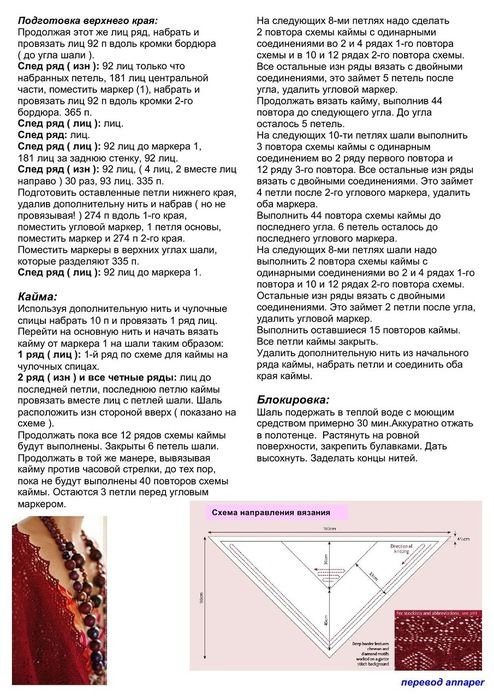 It's bright and very different. nine0003
It's bright and very different. nine0003
Flamenco is a dance that occurs spontaneously, entered into simply by walking down the street or accidentally ending up in a tablao. Here, in general, it is difficult to talk about "special dance" clothes and, moreover, color.
Sevillana is a folk dance whose frilled dresses are distinguished by pomp and elegance, but what it lacks is color restrictions. Most likely, we will not be mistaken if, as the most typical color of the Spanish folk dance dress, we name not any color, but polka-dot fabric. nine0003
So experiment. Below we provide a few sketches that may give you some directions for your creativity.
a) Cut-off dress along the hip line (top - stretch, taffeta flared bottom), curly hip line.
b) Six-piece dress, puff sleeve + 3/4 fitting, decor: lacing.
a) Costume: six-piece skirt, decorated with frills on the bottom, stretch blouse. The sleeves of the blouse are decorated with frills. nine0003
nine0003
b) Costume: corset skirt (wide belt) with frills. Blouse-stretch with 2-layer sleeves "wings". Decor: lace.
Costume: a skirt with ruffles from the hip, a jacket with flared sleeves.
a) Skirt with figured yoke. The panel of a skirt is typed by "shawl" in 3 layers.
b) Dress (top - body stretch, bottom - flared skirt with figured undercut)
[PDF sketches]
nine0002Traditional ornaments of the Spanish dance dress or women's costume include flowers. Both living and "paper" (fabric). They are worn on a dress or in hair. Just in case, below we give an example of a simple rose that can be made from fabric with your own hands and used in various compositions.
[PDF drawing]
Those who wish to deal with this issue in more detail may be advised to refer to special manuals. Modern editions can be searched in ordinary or online bookstores, such as www.ozon.ru or www.bolero.ru, and old ones can be found on the shelves of grandmothers. We can recommend the book "How to make artificial flowers" by A.M. Ivanovskaya (Perm book publishing house, 1959)
We can recommend the book "How to make artificial flowers" by A.M. Ivanovskaya (Perm book publishing house, 1959)
What else can we put our hands on that we might need? Traditional accessories that can be used in flamenco dance include shawls and fans. Their use allows you to emphasize a number of expressive dance movements. In a solo dance, the fan or shawl becomes the dancer's partner.
Any shawl can be taken - plain, printed, with or without fringe (fringe, however, is preferable - it beautifully emphasizes movements), etc. The main thing is that its width (for a half-shawl) or diagonal (for a full shawl) should be approximately equal to the width of the arm span. nine0003
In addition to the large shawl, which is used in the dance or tied around the hips, Spanish folk dance accessories include the so-called "small shawls", which are thrown over the shoulders and pinned to the dress or jacket with a brooch.
Spanish fans are a whole area of arts and crafts. In their manufacture in the past, whalebone, valuable varieties of wood, ivory, various fabrics, precious metals and feathers of rare birds were used. Expensive fans were hand-painted with different subjects, moreover, wood painting, fabric painting, and carving were used. All this is true, but we should not forget that both flamenco and sevillana are based on folk dances. What does it mean - a real Spanish fan should have been available (in purchase or manufacture) to the simple Spanish people. And that means us too. Making a simple do-it-yourself dance fan is quite affordable. nine0003
In their manufacture in the past, whalebone, valuable varieties of wood, ivory, various fabrics, precious metals and feathers of rare birds were used. Expensive fans were hand-painted with different subjects, moreover, wood painting, fabric painting, and carving were used. All this is true, but we should not forget that both flamenco and sevillana are based on folk dances. What does it mean - a real Spanish fan should have been available (in purchase or manufacture) to the simple Spanish people. And that means us too. Making a simple do-it-yourself dance fan is quite affordable. nine0003
To make a simple dance fan, you will need 18 wooden or bamboo plates, a piece of cloth measuring 30x60 cm, glue and a screw (or rivet) for fastening.
[drawing and description in PDF format]
The basis of the fan - wooden spokes. They are made of hard, relatively light wood (for example: beech, ash) or bamboo. We do not mention the whalebone, from which such plates were made earlier - it is a pity for the whales. Soft (pine) or very heavy (oak) wood will not work. If there is no suitable material in a “raw” form, then 30 cm student rulers can be used to make knitting needles. However, pay attention to what they are made of - pine will not work! In total, 18 plates are needed - 2 “covers” and 16 inner knitting needles. The fan should fully open 180 degrees, so that when laid out on the fabric, they are located relative to each other in 10-degree increments. The diameter of the screw holes can be changed, depending on the diameter of the screw or rivet. nine0003
Soft (pine) or very heavy (oak) wood will not work. If there is no suitable material in a “raw” form, then 30 cm student rulers can be used to make knitting needles. However, pay attention to what they are made of - pine will not work! In total, 18 plates are needed - 2 “covers” and 16 inner knitting needles. The fan should fully open 180 degrees, so that when laid out on the fabric, they are located relative to each other in 10-degree increments. The diameter of the screw holes can be changed, depending on the diameter of the screw or rivet. nine0003
It is better to take a smooth fabric for a fan (silk or synthetics), because it should slide open and close. The fan can be single and double. In the first case, the fabric is glued to the spokes of the fan. Glue carefully, having previously made outlines of the position of the plates on the fabric. Use glue that won't show through the fabric. Please note that fabric is glued to one of the “lids” from the inside so that the fan closes.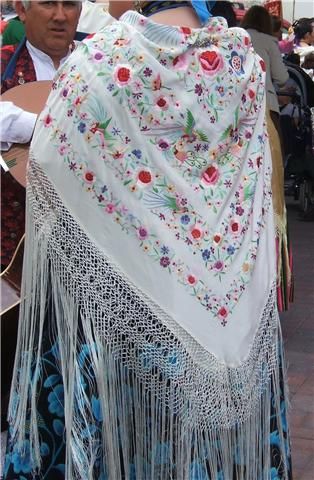
A double fan is made from two layers of fabric that are folded together. The spokes of the fan, in this case, are covered with fabric on both sides. The fabric can be either glued to the plates or stitched together. The seams should form grooves into which the inner plates are inserted. nine0003
Slightly more difficult to make (cutting is added), but more "authentic" Spanish dance fan is shown in the following drawing:
[drawing and description in PDF format]
The difference between this fan and the model presented above is that its "knitting needles" have a more complex shape:
The inner semicircle of the open fan of this model is formed by the blades of the "spokes". Due to this, the fan becomes more rigid, and the fingers - a large "capture area". Usually such a fan is made two-layered (see above). When assembling it, first the knitting needles are inserted into the stitched grooves of the fabric fan, and then they are already fastened with a screw. nine0003
nine0003
A lace strip can be glued or sewn to the edge of the fan for decoration. Fans can be entirely made of lace fabric (there are also embroidered fans), but their manufacture is somewhat more complicated.
The color of the fan is a matter of your taste. Red, white and black fans look impressive, but they can be any other color. The main thing is that the color matches the dress or costume in which you dance.
You can decorate your fan yourself by applying an image to the surface of the fabric with special acrylic paints for fabric or using the batik technique. Fan painting is an important element of many folk cultures and can give you great pleasure. nine0287
Good luck with all your crafts!
[top of page]
Technologies used uCoz
In the village of Tavakanovo, Kugarchinsky district of Bashkiria, the traditions of knitting the Bashkir shawl have been preserved. Recall that it will be held on April 30 in the village of Ermolaevo with the blessing of Bishop Nikolai of Salavat and Kumertau and with the assistance of the Union of Muslim Women of the Kuyurgazinsky District.
 nine0003
nine0003 Tavakanovo is one of the most beautiful villages in our republic, located in a fabulous corner of the Kugarchinsky district. The village was founded about 270 years ago, the founder is the eldest son of the foreman Tavakan Senkem, who once moved from the banks of the Nugush from the Meleuzovsky district. Today Tavakanovo is a prosperous settlement of the Kugarchinsky land. More than 600 people live in the village. There is a large agricultural enterprise "Tavakan", a dairy shop, a medical outpatient clinic, a multifunctional rural house of culture, a secondary school, a kindergarten, a sports and recreation complex with a swimming pool, a post office, and shops. nine0003
One of the keepers of the traditions of the local Bashkir population is the Bashkir folklore ensemble "Senkem". Sankem is the old name of the village and clan of the Sankem-Kipchaks.
“Earlier our village was called Senkem, its name is still preserved in colloquial speech. And our folklore ensemble bears his name.The ensemble was created in 2002. It is already the second generation of amateur artists. All members of the ensemble are the most talented, active local residents, some of them work in the village, many are pensioners. In our free time, we gather in a village club, resurrect traditions and rituals, and invent new elements for Bashkir national costumes. In addition, the ensemble participates in various performances, sketches, in regional, republican competitions, takes prizes. In the past two years, due to the pandemic, we have been participating in online competitions, winning prizes, defending the title of “people's”, which we received in 2008. Our repertoire includes old songs, takmaks, chants, lamentations, old melodies that were left from our great-grandmothers and great-grandfathers, we ourselves come up with backup dancers for them. All work is aimed at preserving and transferring folk art to the younger generation. Most of the participants are between 40 and 80 years old. In addition, a children's vocal and dance ensemble “Yaygor” operates in our cultural center.
We have an ensemble of harmonists, an instrumental ensemble. We work in all genres. Our village is developed, all conditions for a happy life have been created,” says Guldar Abdrakhimova, director of the multifunctional rural club Tavakanovo, head of the Bashkir folk ensemble “Senkem”. nine0339
The Bashkir folklore ensemble "Senkem" presented the ceremony of covering the bride with a shawl for the international festival "The Scarf is a Symbol of Peace".
According to the Bashkir tradition, at the first meeting of the daughter-in-law in the groom's house, the mother-in-law, with warm wishes, covers her with a downy shawl, knitted with her own hands. Until the moment of meeting the bride, the mother-in-law invites her female relatives, neighbors, girlfriends to process the fluff, make yarn and knit a shawl. All these Bashkir traditions have been preserved in Tavakanovo. The goat had an important role in the Bashkir family. She feeds, and waters, and clothes, and warms the family, is a source of income.
The goat is milked, koumiss, short is made from goat milk, and yarn is made from the wool of the craftswomen, a shawl is knitted. Craftswomen put their whole soul into this craft. nine0003
The Bashkir shawl is a precious gift. A fluffy warm scarf made of the finest goat down has earned the right to be called the brand of the republic. In written sources, the Bashkir shawl has been mentioned since the 18th century. In those centuries, the shawl was not yet a detail of an exclusively female costume - the researchers of the region wrote about wide knitted downy shawls, usually worn with winter clothes. The woven or knitted middle of the canvas along the edges was complemented by a patterned ornament. The Bashkir shawl has retained these features to this day. nine0003
A downy shawl, created by industrious hands of craftswomen, knitted for long evenings by the light of a torch, has become an integral part of clothing. But clothes are not only a reflection of the life, life of the people, their relationship with nature, but also the attitude of their soul, their centuries-old culture.
Knitting a Bashkir shawl, like other crafts - weaving, embroidery - has rich traditions. A shawl is not only a piece of clothing. It is an inimitable, unrepeatable work of art.
From the beginning of winter, goats are prepared for combing down: fed with hay, grain, watered with clean water. The owner makes sure that the goats do not catch a cold, but also do not stay in excessive heat. During the day, the goats should definitely be in the sun - in the corral. These rules for keeping a downy goat are carefully observed, otherwise there will be no good down. The fluff is combed out in mid-February, when the frosts are getting stronger, but winter is already beginning to lean towards spring - at this time the fluff is the most fluffy and dense. And before combing out, the goat is kept warm for a day or two so that the fluff leaves easily and does not fall off. First, the goats are combed out with a rare comb, and then with a frequent one. Mistresses take care of their pets and comb out the fluff slowly and smoothly so as not to damage the goat skin.
Up to three hundred grams of the warmest raw materials are obtained from each goat. The resulting fluff is cleaned from dirt, dust, the fluff is separated from the trapped wool. The down is then sorted by color, length and thickness. Each stage of working with fluff requires patience and perseverance - you need to manually sort through all the material. After sorting, the fluff is washed and degreased. The last stage of working with fluff is another combing - "chapalau", after which the fluff becomes soft, silky and is ready to become yarn. nine0003
“I always knit a shawl in my spare time. I learned to knit in the fifth grade. The shawl was our main income, we sold it and bought everything we needed. In our village, almost everyone knits, all women are craftsmen. Previously kept a lot of goats. Now not everyone keeps goats, as you can easily buy goat hair. We order it from Volgograd, they are firmer in quality and fluff for a long time. The down of our goats is easy to fluff and they are very soft.
The down of Caldari goats used to be valued. Our shawls are very popular. They are bought from the north, from Kazakhstan. When meeting a daughter-in-law with good wishes, be sure to cover her with a shawl so that the daughter-in-law is soft, hardworking, and her soul is bright. The pattern of the shawl is the handwriting of the craftswoman. There are several types of Bashkir shawls: Christmas trees, paws, diamonds, zigzag. When knitting, shawls start from one edge - the borders, then go to the middle, then the remaining three borders are knitted and everything is connected. The average weight of the shawl is three hundred grams. Each shawl is knitted for 2-3 weeks. Usually shawls are knitted in winter, when there is much less rural work. It used to be that a large shawl was knitted for Uzbekistan. A standard shawl has 160 rows,” says Ramilya Karazbayeva, a member of the Sankem ensemble, a resident of Tavakanovo. nine0353
Some craftsmen also knit patterns in the middle of the canvas.
Only a few knitters master the art of one-piece knitting of a traditional Bashkir shawl. Finally, the corners of the shawls are knitted, which hold the whole composition together. The finished shawl is soaked in cool water and dried, stretched to its full width, in a well-ventilated area. Particular care is taken to ensure that the shawl retains its square shape. The traditions of the complex process of working with raw materials and the finished shawl make it possible to preserve the features of goat down, according to the definition of the craftswomen themselves, "like that of the goat itself." The ability of goat down to react to cold is also used to fluff a freshly knitted shawl. On a frosty day, they put it and trample it in the fresh snow that has just fallen, and then, after shaking off the snow, they hang it out to dry. This is called "өbөrҫөgә shal tapau". This procedure allows you to achieve special fluffiness thanks to folk practice. nine0003
Members of the folk ensemble “Senkem” are distinguished by their original national costumes.






